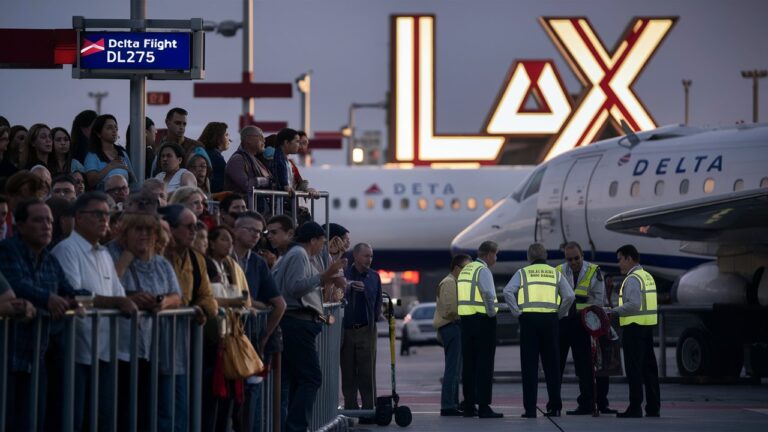Introduction
Delta Flight DL275, en route from Detroit to Tokyo, suddenly faced a critical technical issue over the North Pacific that prompted an emergency diversion to Los Angeles International Airport (LAX). In this article, we dive deep into the incident—orchestrating a seamless landing despite the unexpected engine anti-ice system failure. We’ll unfold the timeline, dissect crew responses, illuminate the safety protocols behind the decision, and uncover what passengers experienced during this unscheduled detour.
Main Body
Delta Flight DL275, operated using an Airbus A350-900 airliner, departed from Detroit Metropolitan Wayne County Airport bound for Tokyo Haneda Airport. However, while cruising at 38,000 feet—approximately 620 nautical miles southwest of Anchorage—pilots detected a malfunction in one of the Rolls-Royce Trent XWB engine’s anti-ice systems. Given the importance of anti-ice mechanisms to prevent risky ice formation at high altitudes, the crew declared a precautionary diversion and opted for LAX, a primary Delta hub with full support capabilities The CurrentTravel And Tour World.
Choosing LAX made strategic sense: the airport was geographically closer than Tokyo, equipped with ground staff experienced in A350 maintenance, and offered extensive Rolls-Royce technical support and ample runway capacity The CurrentLight UETravel And Tour World. The flight safely landed on Runway 06R after about 5–6 hours from the deviation point Travel And Tour WorldLight UE. Delta swiftly coordinated passenger rebooking onto alternate flights, and the aircraft itself remained grounded while repairs were conducted Travel And Tour Worldthetipsygypsies.net.
This unscheduled diversion underlines aviation’s unwavering safety-first mindset—even when facing modern aircraft systems failures. It also demonstrates how technology, crew preparedness, and airport infrastructure must align seamlessly during in-flight anomalies.
Conclusion
The diversion of Delta Flight DL275 to LAX stands as a textbook case of precautionary safety practice. Although the flight never neared imminent danger, the prompt recognition of a potential risk, combined with the crew’s disciplined execution of emergency protocols, ensured that what could have been a critical failure remained a controlled, resolved incident. LAX’s readiness, Delta’s quick communications, and the airline’s commitment to passenger welfare all contributed to a smooth resolution that prioritized safety without compromising operational integrity.
FAQ Section
Q1: What exactly went wrong with Flight DL275?
A: A fault in the engine’s anti-ice system was detected mid-flight over the Pacific, prompting a diversion to avoid icing risks The CurrentTravel And Tour World.
Q2: Why was LAX chosen over closer airports?
A: LAX is a major Delta hub with certified A350 maintenance teams, readily available parts, Rolls-Royce technicians, and runway capacity suitable for emergency landings The CurrentLight UE.
Q3: Were any passengers hurt or inconvenienced?
A: No injuries were reported. Passengers were rebooked on alternate flights, with Delta providing updates and assistance promptly Travel And Tour Worldthetipsygypsies.net.
Q4: How long was the aircraft grounded?
A: The aircraft remained grounded for inspections and repairs, returning to service after approximately 18 hours Travel And Tour World.
Q5: What broader lessons does this incident offer?
A: It highlights the vital role of predictive maintenance, real-time system monitoring, and the strategic value of positioning maintenance capabilities at key hub airports.
